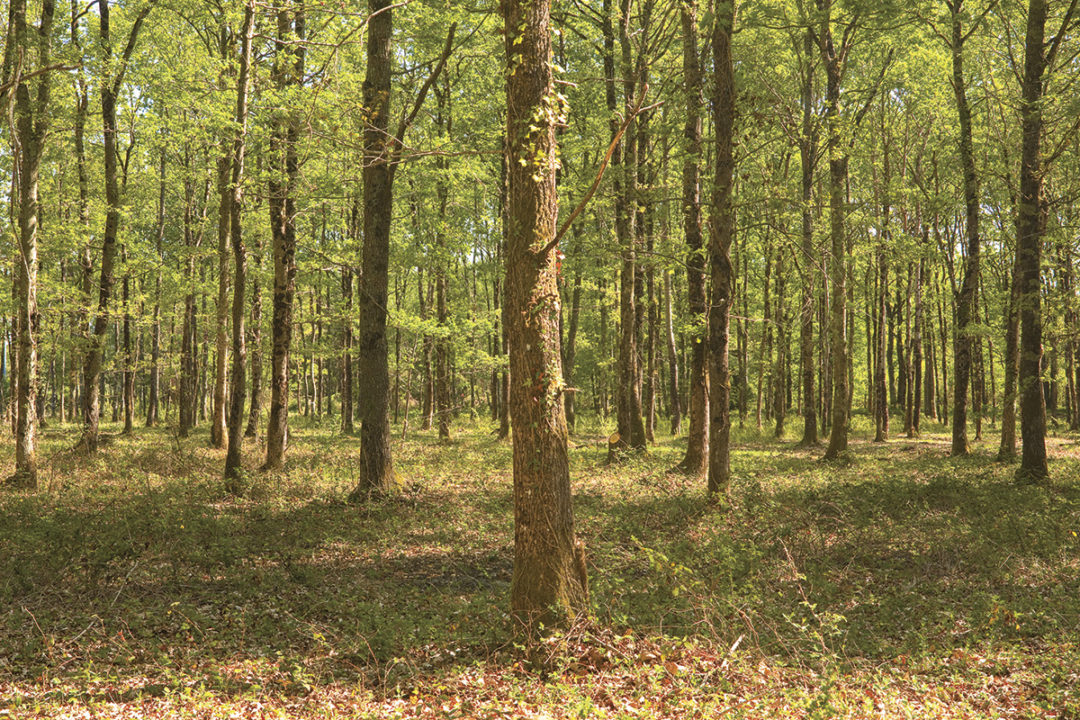Silvopasture is a practice that integrates livestock, forage production and forestry on the same land management unit. It has the potential to be a great fit for producers looking to up their grazing game and add a revenue stream, Rocky Lemus – extension specialist for Mississippi State University – told attendees at the Cattlemen’s College sessions preceding the 2023 National Cattlemen’s Beef Association (NCBA) convention and trade show in New Orleans.
He said that in the short term, silvopasture provides an annual economic benefit by improving the productivity of livestock and the diversity of forage available to livestock and wildlife. Long-term benefits include an integrated, efficient management system that not only provides quality grazing and shelter for cattle but a high-value timber product as well.
Silvopasture systems are not without their maintenance requirements. These inputs of time, labor and resources include the usual suspects when it comes to grazing: fencing, weed control, water and a grazing management plan. Added inputs in a silvopasture system include canopy management – such as tree protection and pruning, soil amendment and pasture establishment/renovation when new trees are planted.
On the other side of the coin, a silvopasture system yields several long-term benefits, including diversification of income revenues, the inclusion of shade-resistant forage species that can be nutritious to livestock, improved plant nutrient uptake, nutrient cycling with good grazing rotations, high-value woodland products as a new source of income, a cooler environment for livestock in the summer, and shelter, wind and weather protection for the herd year-round.
Establishing a silvopasture system
If producers already have a timber stand in place and need to develop an accompanying forage system, Lemus advised getting help from a forestry consultant or a logger, specifically one that understands the end goal and is willing to harvest the trees in accordance with the producer’s plan.
Lemus suggested that if producers are introducing new trees to an existing forage system, it would be smart to hay the forages around them for the first two or three years until they are tall enough and mature enough that the livestock can’t do any damage. “You need to protect those trees or the way the livestock is going to eat them can clip that terminal bar at the top, and they're not going to start growing like you want to,” said Lemus.
Choosing forages
Before selecting forages for a silvopasture system, consider the soil type, climatic conditions, grazing tolerance and adaptability to the local environment.
Warm-season grasses like bahiagrass and bermudagrass can do well if growing conditions (soil type and pH) are met and trees are managed properly to allow about 55%-75% sunlight to reach the ground. Bahiagrass is considered very shade tolerant and has higher yields under 50% shade than in sunlight.
Cool-season grasses such as orchardgrass, perennial ryegrass and tall fescue will grow well when about 35%-65% sunlight reaches the ground. Perennial cool-season forages can perform well under 50% shade, depending on soil conditions. Red or white clover also make good additions to silvopasture forage systems, due to their shade tolerance and nitrogen-fixing properties. White clover also grows well in wet areas.
Choosing trees
The key question to answer when choosing trees is, “What is the yield I want to harvest at the end?” Conifers or hardwoods may be used, either alone or in a mixed species stand. It is generally worth the extra cost to purchase large, healthy seedlings grown from a locally adapted seed source. They are not only quicker to establish and grow but are also more tolerant of browsing and other damages. Tree species ideal for silvopasture include loblolly pine, longleaf pine, honey locust, pecan, poplar and willow.
A design plan for any silvopasture practice should consider the spacing between trees – both within and between rows. Single rows and double rows are often used in silvopasture because they greatly reduce competition between trees and pasture. The width of the alley between tree rows is generally dictated by the size of the farm equipment, but the recommendation is at least 30 to 40 feet wide.
Patience is key for establishing silvopasture. Lemus advised producers to start small and slow, especially if they are new to one or more of the main aspects of silvopasture – such as grazing and forestry. “Recognize you are in for a lifetime of learning,” he said.









